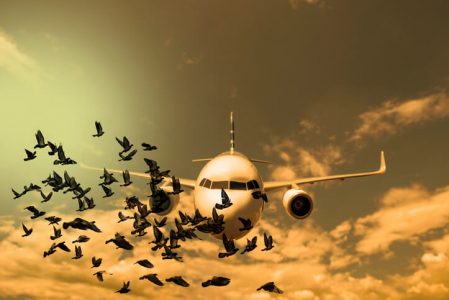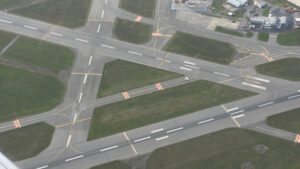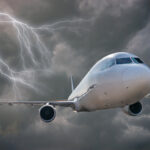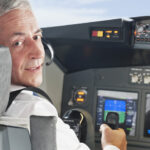Pilot Training for Bird Ingestion May Not Be Necessary for Modern Turbofan Engines
The infamous “Miracle on the Hudson” incident involving Canadian geese has taught us the importance of running through emergency checklists. Thankfully, revisions to bird ingestion certification tests are underway, aiming to prevent a repeat of the Hudson River landing. Following the incident, the FAA established a committee to update bird ingestion standards. With modern jet engines featuring wider fan blades, new testing protocols are required to address the challenges posed by bird strikes and how they are addressed in pilot training.
Under the new ruling, modern turbofan engines must demonstrate the ability to withstand ingestion of the largest “medium flocking bird” without suffering engine failure. Testing occurs during lower power settings, reflecting realistic scenarios encountered during climbs and approaches. This shift is significant, as traditional testing was conducted at maximum takeoff power, which doesn’t accurately represent the fan speeds used during normal flight phases.
The Importance of Pilot Training for Bird Ingestion
Bird strikes pose a significant risk to aviation safety. As such, pilot training for bird ingestion is essential to ensure that pilots are well-prepared to handle these situations effectively. Here are some reasons why pilot training for bird ingestion is crucial:
- Safety of Passengers and Crew: The primary reason for pilot training in bird ingestion is to prioritize the safety of passengers and crew. By equipping pilots with the necessary knowledge and skills, they can respond swiftly and appropriately when a bird strike occurs, minimizing the potential for accidents or injuries.
- Minimize Aircraft Damage: Bird strikes can cause severe damage to aircraft, including engine failure, windshield cracks, and structural issues. Training pilots on proper bird strike response techniques can help minimize the extent of damage and prevent further complications that could jeopardize the safety of the aircraft.
- Prevent Engine Failure: Bird ingestion in jet engines can lead to partial or complete engine failure. Pilots who receive comprehensive training are better prepared to react quickly and follow established procedures to mitigate the effects of bird ingestion, preventing catastrophic consequences.
- Effective Decision-Making: Pilots trained in bird ingestion scenarios have a better understanding of the risks and potential outcomes associated with bird strikes. This knowledge empowers them to make informed decisions, such as whether to continue the flight, divert to an alternate airport, or initiate an emergency landing, based on the severity of the situation.
- Recognizing Warning Signs: Proper training enables pilots to identify warning signs of bird activity near airports or during flight. By recognizing these signs, pilots can take proactive measures to avoid potential bird strikes, such as adjusting altitude or speed, altering flight paths, or requesting assistance from air traffic control.
- Emergency Procedures: Pilot training for bird ingestion encompasses emergency procedures to handle critical situations. This includes actions such as executing a controlled landing, activating emergency systems, or communicating effectively with air traffic control and ground personnel to ensure a coordinated response.
- Understanding Bird Behavior: Knowledge of bird behavior and migration patterns is crucial for pilots when operating in areas prone to bird strikes. Training provides pilots with insights into the types of birds commonly encountered, their habitats, and strategies for minimizing the risks associated with bird ingestion.
- Collaboration and Communication: Efficient communication between pilots and air traffic control is vital during and after a bird strike incident. Training equips pilots with the skills to effectively communicate their situation, request assistance, and collaborate with ground personnel to ensure a swift and coordinated response.
- Regulatory Compliance: Aviation regulatory bodies around the world have established guidelines and standards for handling bird strikes. Pilots must be trained to comply with these regulations, ensuring a consistent approach to bird ingestion incidents and fostering a culture of safety within the aviation industry.
- Continuous Improvement: Pilot training for bird ingestion is not a one-time event but an ongoing process. Regular training sessions and evaluations help pilots stay up-to-date with the latest techniques, technologies, and best practices, fostering continuous improvement and adaptability in mitigating bird strike risks.
Most bird strikes occur after the initial power reduction at takeoff or during the lower power settings of approach. It makes perfect sense to align certification testing with these reduced settings. So, the only time we’ll face double engine failures is when we’re bored in pilot training. Hopefully, we’ll never have to witness another “miracle” landing.










